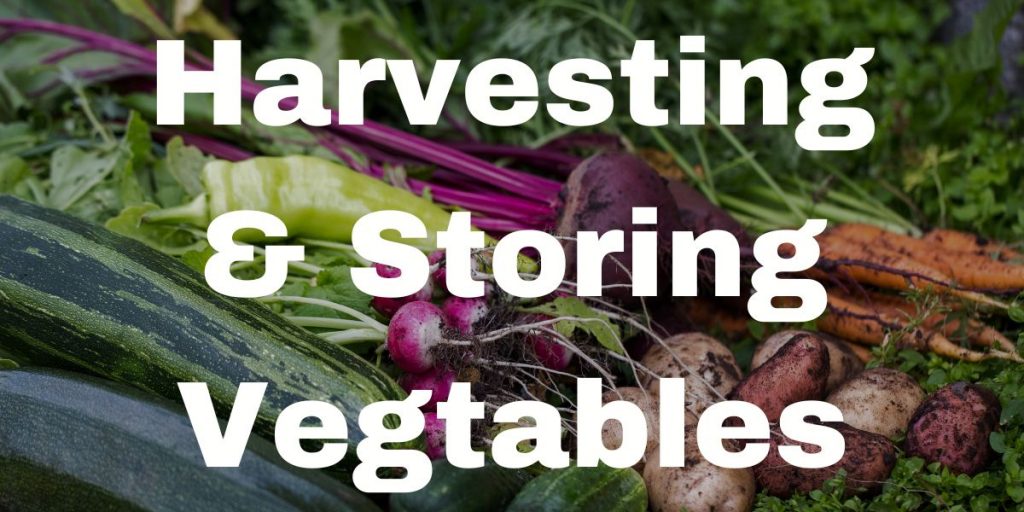Harvesting Vegetables
For fullest flavor and nutritional value, it is important to harvest your vegetables at the right time. Many can be harvested at just about any stage of their growth, but others do not have their best taste if they are picked when they are under-ripe or overripe; they must be harvested at exactly the right point in their development.
If you want the vegetables you have grown to arrive on your table at the peak of perfection, the following are a few suggestions and basic rules on how and when to harvest them:
Asparagus: Plants started from roots should not be harvested until the second year. Plants started from seed are not harvested until the third year. The asparagus spears are ready to harvest when they are about 8 inches long. Mound dirt up over the bases of the spears if you want them to be white and tender.
Beans: Pick the snap type when the pods are young and succulent. For dry beans, let the bean pods mature on the vines, but be sure to harvest before they get so dry that they shatter.
Beets: Best quality and food value are obtained if they are harvested when the beets are no more than 1 to 1½ inches in diameter. If you are canning them, you can add just a little dill for flavor.
Cabbage: Harvest cabbage heads when they are firm.
Carrots: They can be harvested at any size; however, it is best to harvest them before they reach 1 inch in diameter if you plan to eat them fresh. Larger carrots are good for canning or storage.
Corn: For best flavor, most varieties should be picked when they are a creamy yellow instead of an orange yellow. Another sign that corn is ready for harvest is when the silks are drying. Fullness of the tip kernels and firmness of the husked ears are other signs to look for. Corn should be prepared immediately if you want to enjoy full flavor and nutritional value.
Cucumbers: They can be harvested at almost any stage of development before they begin to turn yellow.
Eggplant: Be sure to harvest eggplant while the fruits are still glossy.
Lettuce: The young, succulent leaves can be picked at almost any stage of development. If left too long, however, they will go to seed and lose their best flavor.
Onions: Pick the green bunching type about seven to nine weeks after planting. Most dry onions take two to four months before they are ready. Let the dry onions hang upside down for several days before storing them.
Peas: For best flavor and food value, peas should be picked while the pods are still green and before the peas begin to harden. Check the vines regularly for maturity. Use them immediately if you want to enjoy the best flavor and nutritional value.
Peppers: They should be harvested when the fruits are nice and firm.
Potatoes: Young potatoes can be harvested at about the same time as the peas ripen, but mature potatoes are not harvested until the vines die. Store them in a dark location that is well ventilated and where temperatures are between 40 and 50 degrees. Do not store them near apples. Discard or use all bruised and damaged potatoes; do not store them.
Pumpkins: Allow them to mature on the vine. Harvest them with part of the stem intact before the first severe freeze.
Radishes: Check them regularly because the large radishes become pithy and unusable.
Spinach: Spinach leaves can be harvested as soon as they are large enough to use.
Squash: Summer squashes should be used when they are young and tender with a rind that is easily penetrated by a thumbnail. Fall and winter varieties must have hard rinds. Pick them when they are mature, when the stems begin to turn brown and shrivel.
Tomatoes: Fruit can be picked either when fully ripe or when pink.
Storing Vegetables
Many vegetables can be stored for use during the winter. Practically every home has at least one spot where vegetables can be safely stored. Some ideal spots are an unheated basement, a garage, or the crawl space under the home. A cold, dark attic, a spot under a staircase, or cupboards in the utility room also are often suitable for storing vegetables.
Most vegetables should be stored in boxes or on shelves. Never place vegetables on a dirt or cement floor, as both tend to be too moist. Some root crops like carrots and beets can be stored in a pit, barrel, or box in vermiculite, sand, or light soil in a cool, well-ventilated room.
Ideal temperatures for storage are between 35 and 50 degrees. The room should be dark and well ventilated. Avoid storing vegetables in a humid room, but the air should have a lithe humidity. Vegetables that show any sign of decay or bruising should be used immediately and not placed in storage. Decay can very rapidly spread to your healthy vegetables, spoiling them also.
It should be pointed out that this is only one way to keep vegetables for an extended time, and not all vegetables should be kept in this way. Many vegetables can be specially treated to help retain a higher percentage of their natural flavor and food value. Blanching, freezing, canning, and drying are some of the techniques you can use to accomplish this. Refer to a reliable cookbook for best vegetable processing practices.

Hi, had a great crop of acorn, Delicada and spaghetti squash this year … and of course zucchini ?Great advice on storing winter squash. Thank you so much. I am enjoying your beautiful site for the first time tonight, but it won’t be my last. Thank you again. Great advice on storing winter squash. Thank you so much. I am enjoying your beautiful site for the first time tonight but it won’t be my last. Thank you again. Susan